WORKING GROUP 2: HOUSING MOBILITY
The group tasked with “Housing Mobility” determined the parameters and best practices to inform the design of a voluntary equitable buyout program for New York City.
The work was broken down into three parallel tracts:
- Principles & Values: Laid out considerations when defining an “equitable” buyout program, with a focus on physical, social, and economic considerations
- People & Communities: Conducted community outreach to obtain feedback on effective community engagement strategies and the most frequently asked questions from local residents
- Impact & Place: Compiled research on how to plan for relocation during and after a buyout, including the financial and physical constraints for bought-out residents
recommendations
Whereas, NYC’s neighborhoods – coastal and inland – are regularly flooded as a result of disasters such as hurricanes and increased rainfall;
Whereas, there is a housing crisis in NYC with few vacant units and even fewer vacant affordable ones;
Whereas, buyouts are only one of many tools available to address flood risk and may be used to enhance or complement other resiliency strategies, and communities may advocate for resiliency measures that allow residents to move or remain in place;
Whereas, most buyout programs have been implemented with inequitable outcomes, further exacerbating already existing inequities in communities of color;
Whereas, the program being designed at this time will be limited to 1-4 family structures, and multifamily buildings and businesses will be addressed in future programs; and
Whereas, we recognize that everybody has to make trade-offs in a buyout program, including the City and homeowners
Now, Therefore, the following principles will guide a future housing mobility program for NYC.
The purpose (the “why”) of New York City’s proposal for a housing mobility program is to reduce flooding risk in New York City by acquiring property and moving residents from flood-prone or related (e.g., upstream) housing areas to safe and stable alternatives to affect the overall goal of reducing impacts from flooding.
In support of that goal, WG2 has developed a set of housing mobility program Principles that serve as general guideposts for how, with whom, when, and where the program may be implemented, before, during and after disasters, but more importantly during “blue sky” (non-disaster) periods. WG2 worked collaboratively to collectively define what we think are the most important characteristics of a future housing mobility program.
Inspired by the Louisiana SAFE program’s principles, WG2 has strived to identify key themes that should be considered as the housing mobility program’s procedural details move forward. These principles should help guide key considerations, prioritization, engagement, and planning processes, but are not binding. The principles mirror well-established and recognized best practices for voluntary home buyout programs but have been tailored and framed to the NYC context.
We hope that the principles will be shared publicly with the goal of inspiring and empowering New Yorkers to see the housing mobility program as an opportunity to reduce flood risk, restore ecosystems, and create more resilient and thriving communities across the five boroughs.
housing mobility program principles
principle 1: Voluntary and Well Informed
The program must be voluntary, and must prioritize the alleviation of substantial flooding risk in New York City neighborhoods where the following conditions exist: (1) property owners have expressed an interest in participating, and (2) a community-engagement plan has identified how the program will affect the neighborhood. Eligible residents must be provided necessary and sufficient information in accessible language of their choice to make informed decisions about their options, including why a buyout is being offered; what alternative options are available, appropriate, and feasible; and the tradeoffs of different options for mitigating current and future risks. Participants must also be able to withdraw their participation from the program at any stage in the process.
PRINCIPLE 2: Community-Based and Neighborhood-Specific
While at the end of the day a buyout program serves individual homeowners, buyout programs can change the fabric of neighborhoods. Consequently, a community-driven process that is integrated into other long-term community planning initiatives is critical to ensuring that the buyout program will lead to improvements in the quality of life for all area residents as well as for owner-participants. Because every neighborhood is different, the program should be flexible enough to account for the diverse needs of participating communities, and have a clear process and procedure for doing so. To accomplish this, the housing mobility program must be inclusive of, and enabled by, partnerships with the ecosystem of social service nonprofits, community groups, and social networks within participating neighborhoods in order to collaborate on outreach, intake, communication, and strategies for land reuse and stewardship when possible. This necessitates ensuring that outreach to such groups and residents is thorough and that materials are written accessibly, available in translated versions, and accompanied by counseling in multiple languages and culturally appropriate practices.
PRINCIPLE 3: Housing-Centered and Housing-Focused
The program must recognize the intersections between buyouts and the housing market: New York City is facing a significant housing crisis, with some of the lowest vacancy rates seen in years. While buying and demolishing a home takes it out of harm’s way, it also adds to this housing crisis. For the housing mobility program to be effective, it must promote access to safe, affordable housing. This could be achieved through: robust rehousing and case management services with mortgage resolution expertise; by combining housing mobility program resources with other housing programs; by providing sufficient financial resources for relocating owners and renters; and by investing in affordable housing out of flood prone areas for participants to access.
In historically overburdened and underserved neighborhoods where histories of disinvestment have contributed to higher rates of vulnerability, the housing mobility program should recognize and account for these historic injustices when determining strategies for fair compensation, such as by using Fair Market Value adjustment factors. The program should strive to address other well-documented challenges including finding permanent replacement housing and increased housing costs, to the extent possible.
PRINCIPLE 4: Equitable and Renter-Inclusive
The program should be human-centered and strive to prioritize assistance to New Yorkers who need the most help. The program should endeavor to provide access to holistic wrap-around services including housing counseling, financial counseling, and mental health support services with a trauma-informed response. These resources should be included before, during, and after the buyout process and should be available to both homeowners and renters.
Recognizing that the majority of New Yorkers are renters – many with significantly less agency and resources in times of emergency than most homeowners – the program needs to provide sufficient resources to equitably support the relocation of renters above and beyond the requirements of the federal Uniform Relocation Act. Relocation opportunities should be in climate resilient communities and prioritize access to economic opportunities and social cohesion. The City should utilize all available tools to develop affordable rental housing and home ownership opportunities during blue skies to enable renters to have this housing mobility option before disaster strikes.
PRINCIPLE 5: Environmentally Restorative and Integrated
The program should require that any acquired properties be preserved as open space in perpetuity, with no further residential, commercial, or industrial development allowed. However, rather than end uses with few ecological benefits, such as mowed lawns that absorb little stormwater, the buyout program should strive to restore natural floodplain function, create vital flood protection infrastructure, and integrate the bought-out parcels into a broader watershed management strategy for flood risk reduction. Tailored for each community, these restored floodplain ecosystems should maximize climate co-benefits such as reduced heat island effect, improved water quality, and restored habitat for improved biodiversity. Residents who engaged in previous buyout programs clearly stated that their participation was in part contingent on a clear understanding that the land will only be reused for ecological purposes.
To the extent possible, the City should integrate planning and funding for the stewardship and maintenance of buyout parcels before the program begins. The City should partner with community organizations and use neighborhood feedback as a way to create and get buy in for adaptive reuse plans that maximize local benefit. As an example, buyout parcels could be used to expand access to bluebelts and greenbelts that increase access to nature and open space especially in neighborhoods lacking such amenities.
PRINCIPLE 6: Permanent and Accountable
In order to help build a more resilient New York City, the housing mobility program should be viewed as a multi-decade, multi-generational effort to build resilience to flooding and mitigate climate impacts. A permanent program should operate year-round with the ability to be deployed rapidly in the event of a disaster or as funding is available. This kind of rolling program – rather than a more traditional pre-disaster or post-disaster one – can support more robust institutional learning and interagency collaboration. The housing mobility program touches on the work of many City agencies: By creating a permanent program, agencies will have the time to work collaboratively and test different methods for communication, outreach, engagement and delivery, as well as invest in receiving feedback from community partners, city staff, and participants to identify strategies for program improvement, with the goal of building trust and accountability.
MEET THE MEMBERS of working group 2
CO-Facilitators
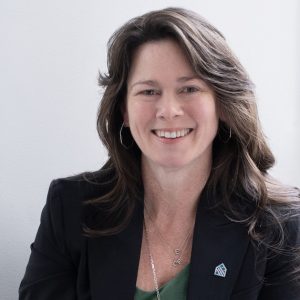
Christie Peale
CEO, Executive Director, Center for NYC Neighborhoods (CNYCN)
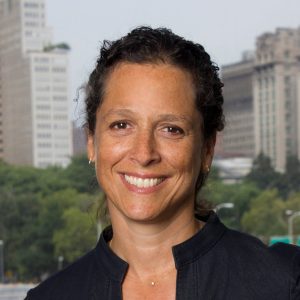
Elizabeth Greenstein
Chief of Staff, Mayor’s Office of Housing Recovery Operations (HRO)
PARTICIPANTS

Aisha Balogun
Special Projects Associate, Housing Solutions Lab at NYU Furman Center

Amy Chan
New York State Division of Housing and Community Renewal (NYS HCR)
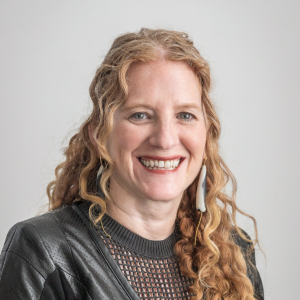
Amy Chester
Managing Director, Rebuild by Design
Annie Stefanski
Deputy Director, Neighborhood Restore HDFC

Anthony Coker
Program Manager, Neighbors Helping Neighbors

Bo Chung
Department of Health & Mental Hygiene (DOHMH)

Britney Dixon
Coalition Coordinator and Grant Administrator, Far Rockaway Arverne Nonprofit Coalition

Debra Ack
Special Project Coordinator, East New York Community Land Trust & Justice For The Jewel Streets Coalition

Desiree Thomas
Vice President/Director of Climate Finance, TruFund Financial Services

Dmitri Johnson
Climate Adaptation Practitioner, TNC Climate Adaptation Team
Jacob Ahola
New York City Emergency Management (NYCEM)
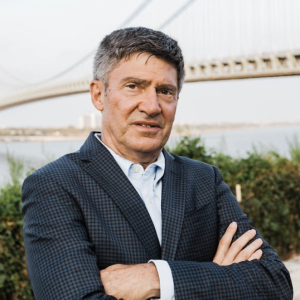
Joseph Tirone
Real Estate Team Leader, Joe Tirone Team, Compass

Kate Boicourt
Director, Climate Resilient Coasts and Watersheds, Environmental Defense Fund

Kelly Leilani Main
Executive Director, Buy-In Community Planning
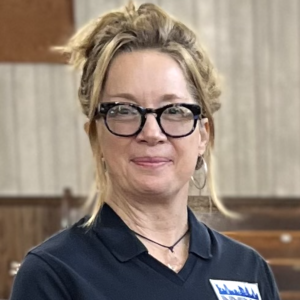
Lucy Cummings
Director, Faith Sector Resilience, New York Disaster Interfaith Services (NYDIS)

Mallory Rutigliano
Office of Management and Budget (OMB)

Michael Marrella
Department of City Planning (NYC DCP)

Michael Sandler
Department of Housing Preservation & Development (NYC HPD)
Sangu Iyer
Department of Environmental Protection (NYC DEP)

Tallant Burley
Formerly, Mayor’s Office of Climate & Environmental Justice (MOCEJ)

Thaddeus Pawlowski
Managing Director, Columbia University, Center for Resilient Cities and Landscapes

Tyler Taba
Director of Resilience, Waterfront Alliance